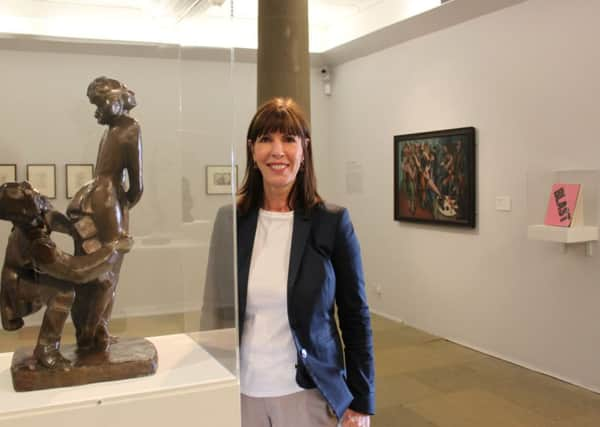Art in motion at Leeds Harewood House


‘Movement is the translation of life, and if art depicts life, movement should come into art, since we are only aware of life because it moves’. That quote from renowned French-born sculptor and draughtsman Henri Gaudier-Brzeska is central to a major new exhibition of the artist’s work currently on display at Harewood House.
New Rhythms: Art, Dance and Movement in London 1911-1915 was originally on show earlier this year at Kettle’s Yard in Cambridge and Harewood, which holds a number of Gaudier-Brzeska works, is the only other venue to receive the exhibition. It is a compelling collection of sculpture, drawing, photography, film and archive material which explores Gaudier-Brzeska’s engagement with dance and movement. Taking as its starting point two contrasting sculptures – the figurative bronze Dancer and the more abstract Red Stone Dancer – made by Gaudier-Brzeska in 1913, the show looks at the inspiration behind them using them to examine the artist’s fascination with the challenge of depicting movement in art, and considers the cultural setting – Edwardian London – in which he was working. It also includes work of other artists connected to, influenced by or who influenced him, such as Auguste Rodin, Jacob Epstein and William Roberts.
Advertisement
Hide AdAdvertisement
Hide AdBorn in St Jean de Baye near Orleans, Gaudier-Brzeska moved to London in 1911 with his partner Polish writer and artist Sophie Brzeska, eighteen years his senior, with whom he had an intense symbiotic relationship. Although Gaudier-Brzeska frequently asked Sophie to be his wife, they never married. Poignantly, the last time he proposed to her was from the trenches of the First World War where he died in 1915. He was 23.
It is remarkable what he achieved in his short lifetime – from the age of 18 up to his death he created a hundred sculptures and a thousand drawings. “He was quite a character – a wild child, from a poor background with no formal training but he was completely driven,” says Nicola Stephenson, Exhibitions and Projects Producer at Harewood. “His output was extraordinary, really. When you look at his work you can see that he was constantly experimenting and trying new things; and there is that ‘what if’ feeling – you wonder what he might have gone on to achieve if he hadn’t died so young.”
Gaudier-Brzeska arrived in London at an exciting time of change and quickly became a key member of the Vorticist movement – a group of artists and intellectuals which included Ezra Pound, Wyndham Lewis and William Roberts. “It was all about the energy of the new, modern world,” says Stephenson. “The old Victorian world had been swept away and they were looking forward to the possibilities of the 20th century.” The tragedy is, of course, that much of the youthful creative potential of that new century, including Gaudier-Brzeska’s, was about to be snuffed out by the coming war. Also at that time, there was an explosion of interest in new dance trends, nightclubs and jazz – and Diaghilev’s Ballet Russes. “We can’t know for sure, but we think Gaudier-Brzeska went to see Diaghilev’s production of The Firebird which came to London in 1912,” says Stephenson. “That is what inspired his famous sculpture Firebird – which is from the Harewood collection and was brought here by the 7th Earl in 1967. It was Gaudier-Brzeska’s second commission and it captures the moment when the firebird is trying to escape from the prince.”
It is a perfect example of Gaudier-Brzeska’s fascination with what he called ‘transitional movement’ – that point in time when there is a (barely perceptible) shift from one position to another. There are some beautifully simple drawings that also illustrate this, such as The Stag, Two Elephants Fighting and Female Nude, in which – with just a few lines – he creates a palpable sense of motion. You can almost feel the energy, excitement and invention still emanating from his works, more than a century on.
At Harewood until November 1.